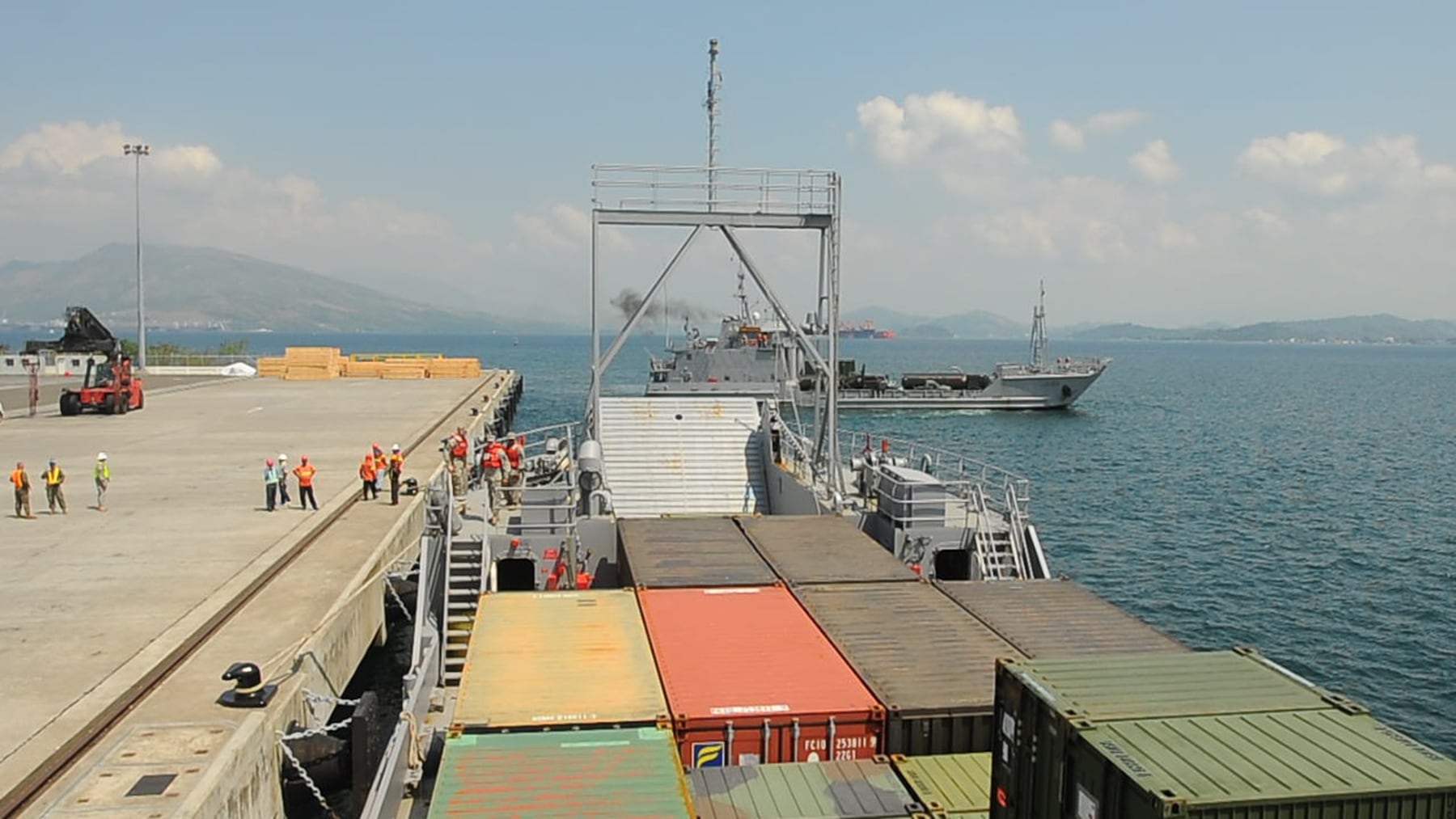HUNTSVILLE, Ala. — The U.S. Army must adapt its approach to logistics to prepare for an adversary such as China, military officials say, and the service is taking steps to tackle the challenge, standing up a team tasked to develop capability that will enable troops and large amounts of equipment to deploy even in constantly contested environments.
“It’s a gigantic problem, especially in the priority theater,” Gen. James Rainey, head of Army Futures Command, said at a conference in Washington, referencing the Indo-Pacific.
The service acknowledged the contested deployment problem in a 9-page annex that was part of its Multidomain Operations doctrine published last fall.
Army Secretary Christine Wormuth appointed Army Materiel Command in October to lead service efforts on figuring out how to deploy troops with large amounts of weapons and equipment from fort to port and beyond in an environment where the service is unable to travel freely without adversary interference — commonly referred to as “contested logistics.”
Together with Army Futures Command, which oversees requirements, AMC is moving forward with efforts to develop a strategy and plans, according to Rainey.
Top focus areas are buying new capability, working with the industrial base, securing operational lines of communication, increasing the lethality and survivability of deployable formations and lightening the logistics tail, he said.
More details are expected in the coming months, Rainey told Defense News in a March 28 interview at Association of the U.S. Army’s Global Force Symposium in Huntsville, Alabama.
AFC set up cross-functional teams when it was established in 2018 to focus on modernization priorities including Long-Range Precision Fires, Next-Generation Combat Vehicles and Future Vertical Lift.
For the first time since the command’s beginning, it is creating a new CFT, focused on contested logistics with portfolios centered on lines of effort that will be announced at a later date.
“It will have the mission to work the portfolio of contested logistics,” Lt. Gen. Christopher Mohan, deputy commanding general of AMC, told Defense News in an interview just ahead of the symposium. “But it will also integrate sustainment into the rest of the CFTs.”
Eye on the Pacific
As the Army works out a strategy and an execution plan for preparing logistics operations in contested environments, it will focus specifically on the Indo-Pacific theater with an eye on fully fleshing out capabilities across the force by 2040, Mohan said.
“We’re really focused on INDO-PACOM. That is probably our hardest fight to sustain just based upon the sheer geographical distances and the fact that there’s so much water out there,” he said.
This doesn’t mean the Army isn’t focused on other regions like Europe or on what it is doing to help Ukraine in its fight against Russian invaders, he noted, “but increasingly you’ll see budget decisions are being made that are starting to steer us towards our pacing threat and that’s no surprise.”
The National Defense Strategy, released in 2022, is focused primarily on an increasingly aggressive China as that pacing threat.
A series of war games will begin in a few weeks in the INDO-PACOM theater that will be focused on sustainment, according to Mohan, and AMC will participate and work through major issues to consider.
The U.S. continues to announce additional basing and is working to develop relationships in the region that will aid the Army’s logistics tail there.
“Every time we have an additional base is an additional potential dilemma for our adversary,” Mohan said.
The Army is also considering how it will modernize prepositioned stocks there from the possibility of expanding the amount, to the potential of expanding locations where equipment is stored.
“Maybe not in large sites like we have in some places, but maybe in smaller locations that are more dispersed,” Mohan said.
RELATED

The service has also learned and demonstrated through its support to Ukraine that it can rapidly move stocks of both munitions and equipment around the world, which is triggering conversations such as how much can be prepared in the states before sending overseas and how much should be put in large stockpiles regionally, he said.
“Should we prepare the theater to receive ... munitions and equipment and really build that skeleton of access, of partnership, through exercises and the ability to know where we need to go and what we need to put out here,” Mohan said.
Predicting battlefield needs
Thinking across the entire logistics chain, AMC Commander Gen. Charles Hamilton is focused on establishing robust predictive and precision logistics.
The effort will provide better visibility into the condition of weapons, equipment and parts across the force and could even help to automate some of the processes resulting in streamlined delivery of stocks to where they are needed. The capability “will enhance our ability to deliver selected stocks autonomously, over longer distances with an increased payload,” Mohan said.
Another key piece to managing logistics in a contested environment is being able to see it all in real time using data flowing from live operations, something the Army experimented with during its last Project Convergence.
“How do we build the combat power for U.S. forces and coalition forces and how do we then get the right kind of data analytics and pull the right data to monitor the health of that equipment?,” Mohan said. “Most of our systems have that capability built into them. … Can we automate routine things like the provisioning and shipment of service kits?”
For example, Mohan said, can data coming from a tank indicating an issue with a transmission get processed through a system where, using artificial intelligence, a service kit automatically is sent out to the maintainer along with a message to fix the transmission?
“Those are things that we’re experimenting with,” he said.
Jen Judson is an award-winning journalist covering land warfare for Defense News. She has also worked for Politico and Inside Defense. She holds a Master of Science degree in journalism from Boston University and a Bachelor of Arts degree from Kenyon College.








